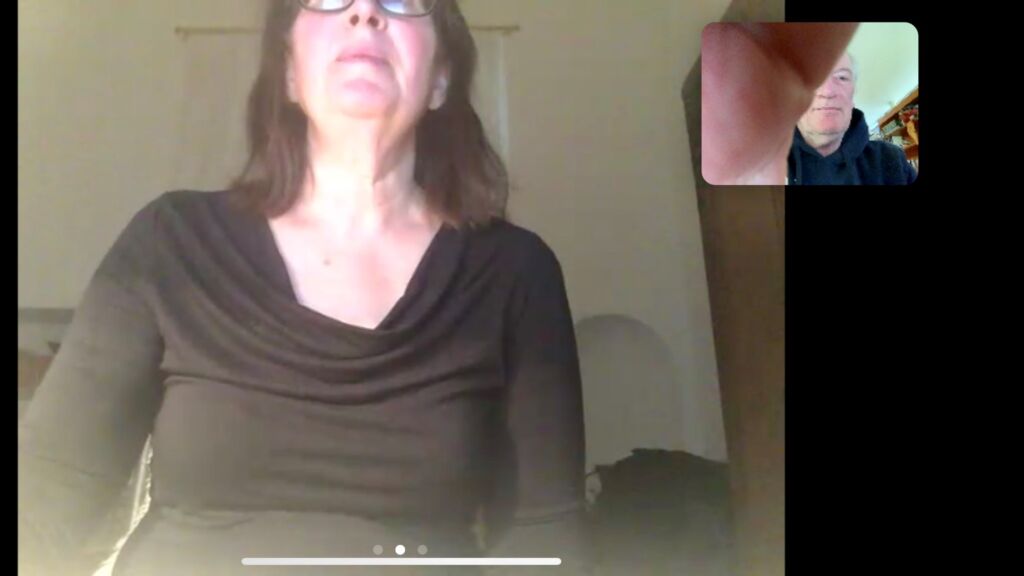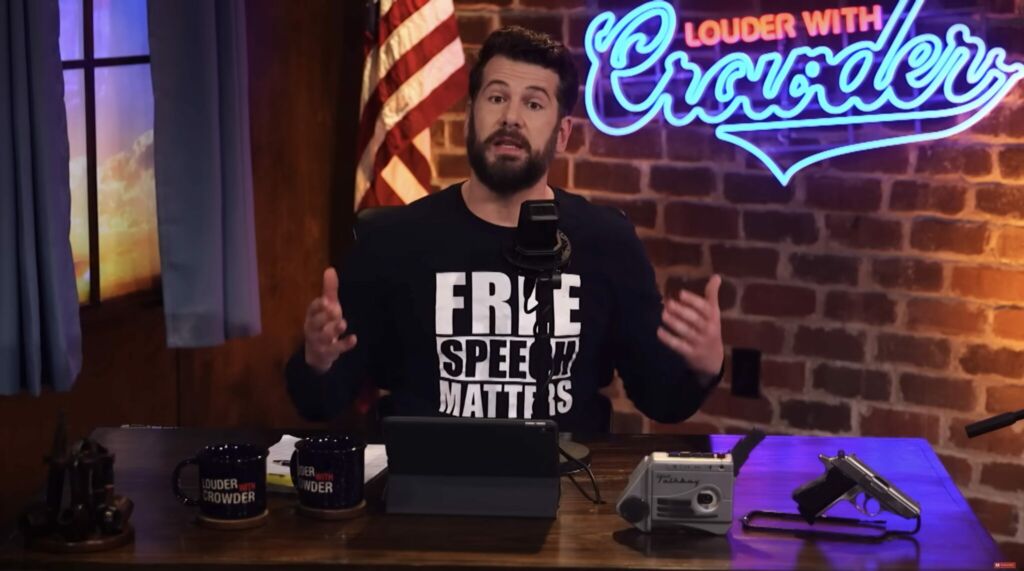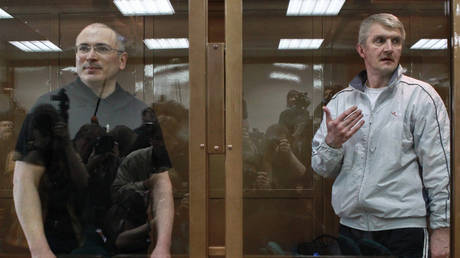Right-Wing Alternative Media or Right-Wing Hobbyism? Streaming for Hearts and Minds
The information war is a Darwinian environment.
Whether it be a TV news program, a podcast, or a simple social media post made by an anon, all content is now fighting for attention in a ruthless numbers game on a competitive online battlefield.
Similar to the axiom “the medium is the message,” we should embrace the idea that “the presentation is the message” in that visual and audio standards determine whether information becomes mass-shared and builds a regular audience, or is just scrolled past and disappears forever.
Sadly, in Darwinian terms, some of our technical standards are dysgenic.
Every creative scene and artistic movement of any historical significance utilizes written criticism as a vital component. If it’s not written about, in many ways it doesn’t really exist. Only when something is the subject of debate and discussion does it truly matter.
So consider this piece a compliment to the dissident Right alternative media scene, because my criticisms mean it is actually worth writing about, and hopefully dimensions other than streaming and video will be covered journalistically, too, creating a swirling effect that boosts its relevance and viewership.
In dissident Right circles, there is a distinct lack of quality presentation.
Technical problems plague our messaging, which is already on the fringe and thus doesn’t need additional barriers to accessing it. Why would we add another layer to defuse and obstruct our points? We have podcasts that often sound and look terrible. They are high-quality in terms of substance, but amateur in terms of audio quality, and often completely lack effort in terms of their visual aesthetics.
Some of these shows have run for years, if not a decade or more, in some form, yet their lack of quality control creates a ceiling of accessibility. Mainstream audiences naturally expect a basic level of slickness in how things look and sound because they are transitioning from professional TV broadcasts.
If our scene does not want to provide something that is easy on the eyes and ears, there will be plenty of alternatives on YouTube created by the establishment and controlled opposition.
If you just want to preach to a small group of the converted, then you are nothing but a Right-wing hobbyist. If you do not want to reach the widest possible audience and numbers mean nothing to you — go and write in a private diary.
One of the myths about art is that it’s about “personal expression.” Religious art, cathedrals, portraits, and depictions of nature may have a personal style, but they are about things bigger than and preceding the individual. Thus, our lasting creative history consists of grand themes presented in the most refined and epic ways imaginable. Even the smallest Right-wing media should therefore not take the form of a private Zoom call or a doodling pad of self expression.
To gain as wide an audience as possible, a project cannot resemble an amateurish hobby. It must inspire pride in its craftsmanship so that it will in turn be appreciated by the public, who have a natural instinct for quality.
It’s a numbers game: the more people see it, the more impact its message has on the world.
Why do so many people have a white wall behind them for two hours every week on their streams? I could be asking this of many of our best streamers. Why are the most important nationalist thinkers broadcasting at the aesthetic standard of a middle-aged woman’s Zoom meeting?
We aren’t just communicating amongst a closed network of chums, we are trying to change the world.
How is it that a 13-year-old in high school can manage to buy a colored lamp, dress a background, use a blue screen, incorporate advanced software, operate a microphone properly, and create some kind of aesthetic experience, while nationalist streamers asking for donations cannot? If you fix the technical side, your viewership grows, your existing audiences will appreciate the upgrade, and donations will go up. It’s an investment.
It is baffling why any major nationalist streamers would have poor audio quality, but some of them do. Good sound isn’t just about having a microphone, it’s about not doing it in your kitchen amongst hard surfaces or any other room with an echo.
If you are a regular streamer, you should have a place in your home that is carpeted and has other soft material to “deaden the space” from reverberation. This little investment leads to more people being able to tolerate the show and it having more of an afterlife in the form of viral clips, mashups, or even being incorporated into documentaries within the movement. A low-cost version of acoustically treating the space can be achieved simply with temporarily putting up blankets and pillows.
Audio is far more important than the image quality, but once you have mastered nice, clean sound it’s time to work on visual aesthetics.
This is achieved with lighting, background, and framing.
People complain about Stephen Crowder and resent his popularity. But why is he successful? Is it because he’s “false opposition” and therefore pushed by the establishment? Yeah, partly. But it’s mostly because Louder with Crowder looks and sounds like a TV show. There is no echo as if it’s recorded in an empty garage, and no rubbing or rattling of the mics. The dim and purposeful lighting is easy on the eyes, and the set is attractive, inspired by television talk show and news channel conventions. There are no white walls in the background lit up by eye-hurting fluoros.
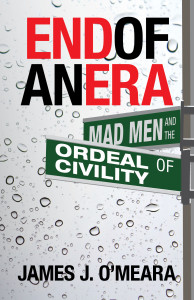
You can buy James O’Meara’s End of an Era here.
The mood being evoked actually harkens back to a time when men would feel comfortable smoking a pipe on television. This allows normal audiences to make the seamless transition from TV to YouTube and consume this alternative media. It becomes authoritative simply because of how well-produced it is.
Crowder’s show is also designed to entertain. Do we do the same? Do we incorporate comedy and music, as Crowder does? No, we are too autistic for that. I’m not suggesting that every political show needs to cut to comedic sketches or live music, but it there are some gaping holes in what our scene is providing — and this further creates a ceiling of what is possible in terms of building an audience.
In the Australian milieu specifically, we have also missed out on having a “bloodsport” period that went some way in mainstreaming the dissident Right in America and establishing various personalities as dissident Right fixtures. Sometimes these events would end up as the top trending stream on YouTube globally, but for whatever reason we lack a producer’s savvy to create spectacle in our own Australian programming.
This contrast can be seen with recent American import Elijah Schaffer, a sort of Don Lane in our local alternative media sphere. Every technical suggestion I have made in this article he is already doing, and his show looks and sounds professional. He has also started to organize debates in a bloodsport-style fashion and achieved very large ratings. What this does is start bringing in normies, cuckservatives, and casual and politically neutral audiences. A fight draws a crowd. It creates a funnel of people into our movement.
And when you look at the subject of one of his debates regarding Zionism, it had an Internet-breaking effect as one side of the argument imploded in real time, with Gavin McInnes walking out as his Jewish-Zionist teammate threw him and Catholicism under the bus.
This all became viral and moved minds, and that’s what this format provides: the efficient creation of viral material that can penetrate outside of our own ideological bubbles. Human nature is attracted to conflict and the dramatic as a form of spectacle.
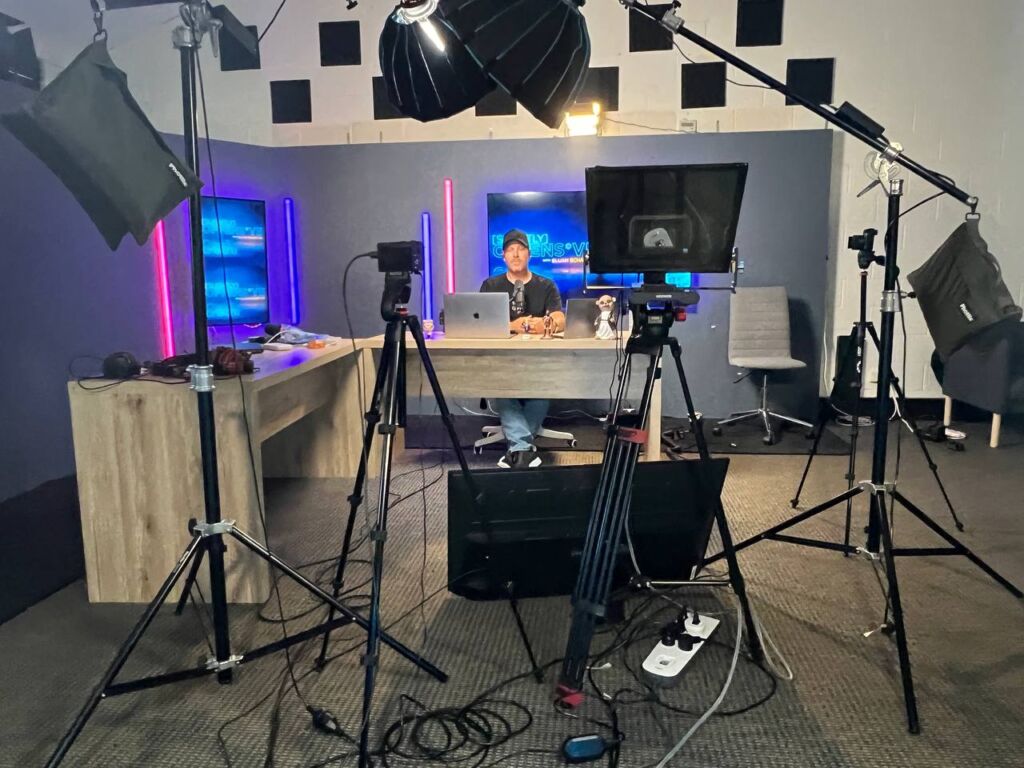
Elijah Schaffer setting up his studio for a debate pitting Joel Davis and Jared Taylor against two Leftists.
What can you do as a little guy?
You might not want to become a streamer yourself, but one of the best things you can do is “clip” these shows. Take the best and most insightful moments from nationalist streams and make them into short videos for social media and TikTok. Sometimes such clips will work entirely on their own with no further editing required, while sometimes they will work better with some editing, perhaps with cutaway examples of what is being discussed, contrasted with another point of view that it successfully exposes — or simply stylized with music in zoomer TikTok mode.
Building a social media channel and supporting the network of keyboard warriors is a valuable part of our propaganda. Being a keyboard warrior is actually quite underrated if you make an impact. But if you don’t want to run a social media page, just clip the videos for bigger accounts to share. Or, slide into direct messages and just send them material in edited form. Make arrangements with people. This will ultimately help both the social media accounts and streamers, plus you get to stay safely anonymous.
If you are a techie, you can help existing streamers to make their shows look and sound better. If you have that know-how, you should be a technician and facilitator. Maybe you can support these shows in a producer role by organizing future guests and working on promotion.
At the very least, if you cannot contribute anything substantial or technical, just become a click-farm and like/comment/share everything posted to help the algorithm.
To be clear, although I am criticizing the production standard of various nationalist streamers, I recognize that they are mostly doing it on their own and in their spare time, are self-funded, and don’t have the production teams we see in television.
What I’m suggesting is that we change this and have a greater sense of collaboration.
If we really want to have a separate Right-wing culture, we need to be providing news, opinion, philosophy, art, and entertainment that competes with what the system already does in terms of presentation standards.
Significant audiences can and will make the switch; we just need to look at Crowder and Schaffer for proof of that. But beyond what already exists, an imagination for new things — a kind of digital avant-garde with the ability to create entirely new formats and approaches — could ultimately win the biggest slices of the audience.
This is something we have successfully achieved on a smaller scale with our brilliant meme culture, and to do this we require not just media and film literacy, but also inspiration for what is possible.
This is not something I am calling for solely from the on-screen talent; ideally, they should have technical support and production teams behind them.
Podcasting, online videos, and streaming are new mediums, and I think we have only scratched the surface of what can be done with presentational form and style. We are trying to rival mainstream TV, so we must compete with it technically and aesthetically.
We simply cannot continue to make excuses for poor-quality presentation anymore when our message is so important.
Reprinted by permission of the author from The Noticer.


